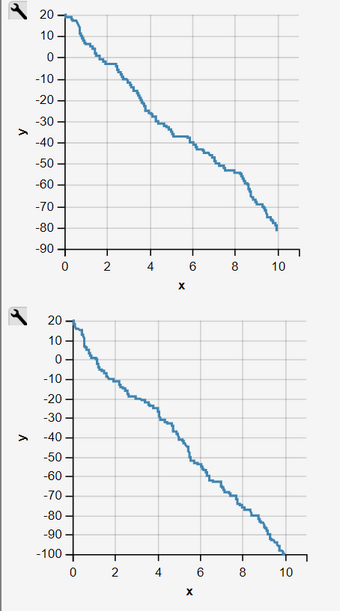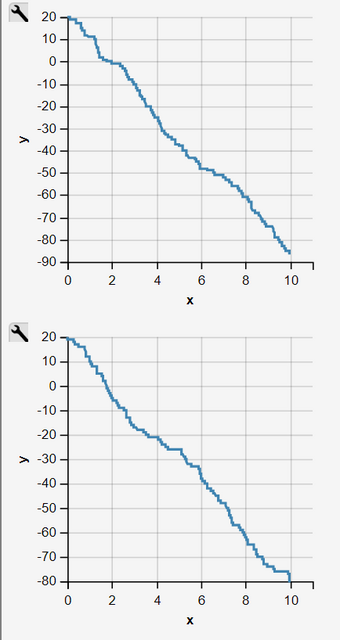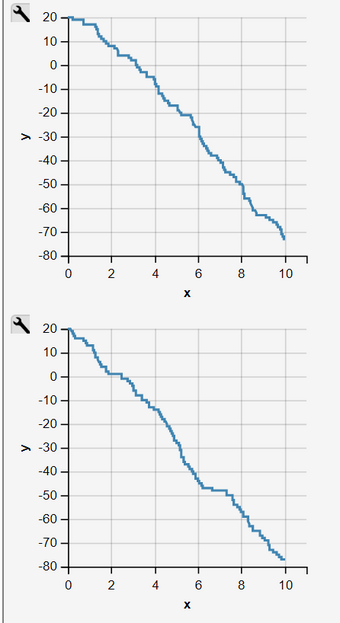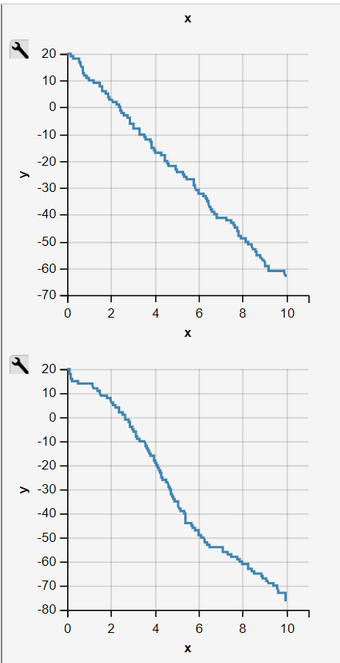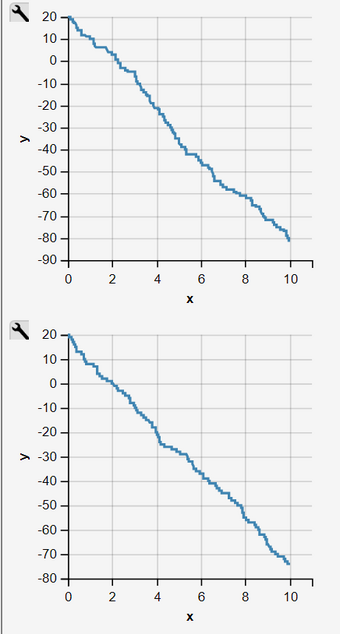Continuous-Time Discrete-State Stochastic Decay
Continuous-Time Discrete-State Stochastic Decay
Continuous-Time Markov Chain of Degradation, Decay, or Departure
Introduction
A simple homogeneous degradation, decay (e.g. memory decay), death, or departure process can be described as a directed graphical model (stoichiometric equation in chemics):
NAλ⟶∅(1)
where:
A := is a species of interest
NA := is the number of particles of species of interest
λ := is the rate constant of degradation events
∅ := is a species of no special interest
In a homogeneous process the rate is defined as a constant λ so that λ⋅dt gives the probability that a randomly chosen particle of A reacts, degrades, dies, decays, or departs during the time interval [t,t+dt) where t are time and dt an (infinitesimally) small time step.
In an in- or nonhomogeneous process the rate is dependent on time or state λ(t) or λ(NA(t)) so that λ(t)⋅dt or λ(NA(t))⋅dt gives the probability that a randomly chosen particle of A reacts, degrades, dies, decays, or departs during the time interval [t,t+dt) where t are time and dt an (infinitesimally) small time step.
The stoichiometric equations or the DAGs are now:
NAλ(t)⟶∅ with time-dependent rate (2.1)
NAλ(NA)⟶∅ with state-dependent rate (2.2)
The Definition of the (In-)Homogeneous Counter Decay Process
The "naive" implementation of the solution of the decay counter process is based not on dt but on a discrete approximation Δt>>dt so it is wise to reuse and modify the second definition of the Poisson process. The decay process NA(t),t∈[0,∞) is called a homogeneous counter decay process with rate λ>0 if all of the following conditions hold:
1.NA(0)=NA0>0 ;
2.NA(t) has independent and stationary increments
then we have
P(NA(Δt)=0)≈1−λΔt(3.1.1)
P(NA(Δt)=−1)≈λΔt(3.1.2)
P(NA(Δt)=−2)≈0(3.1.3)
or more precisely
P(NA(Δt)=0)=1−λΔt+o(Δt)(3.2.1)
P(NA(Δt)=−1)=λΔt+o(Δt)(3.2.2)
P(NA(Δt)=−2)=o(Δt)(3.2.3)
where "little o" denotes a function g(.) o(Δt):=g(Δt) that 'vanishes' faster than Δt when
limΔt→0g(Δt)Δt=0,(4)
or short
o(Δt)→0 as Δt→0.
WebPPL-Script: Stochastic Simulation of (In-)Homogeneous Process with Constant Time Increment Delta
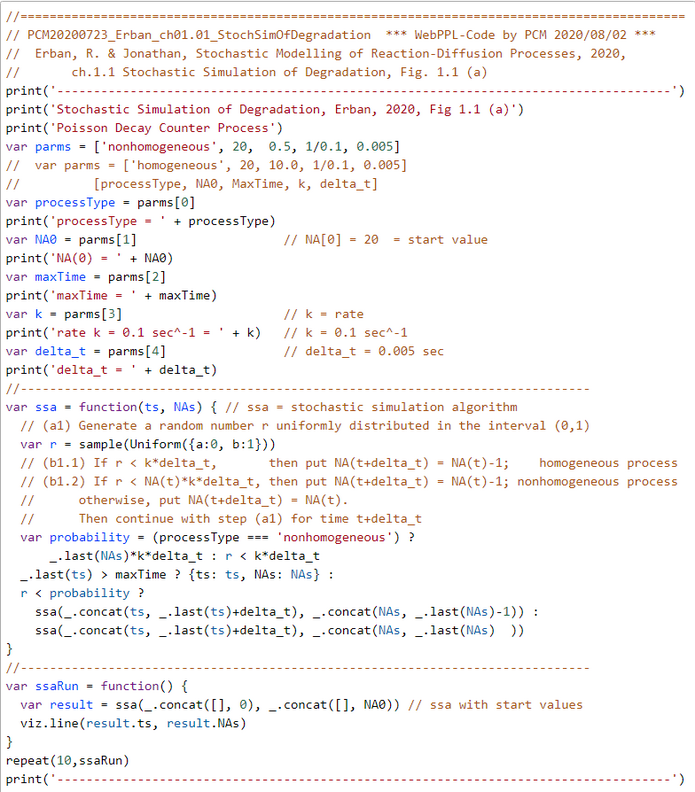
Simulation Runs as an Inhomogeneous Pure Decay Process
Fig. 1: Parameters of Inhomogeneous Process with State-dependent Rates



Fig. 2 - 11: Sequence of 10 Independent Simulation Runs of an Inhomogeneous Pure Decay Process
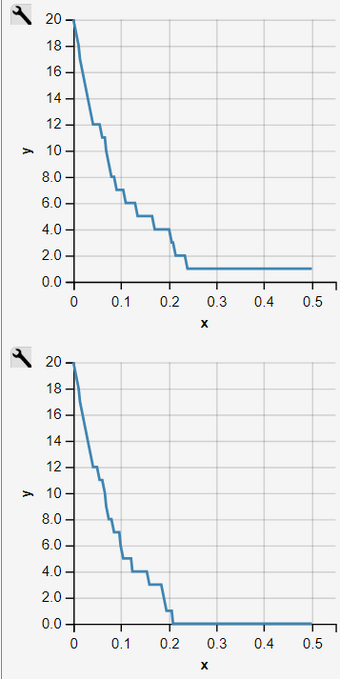
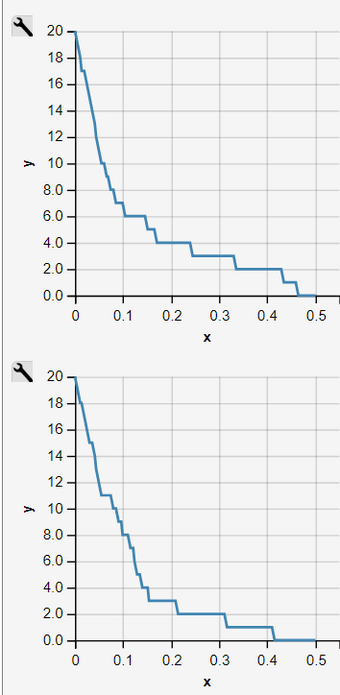
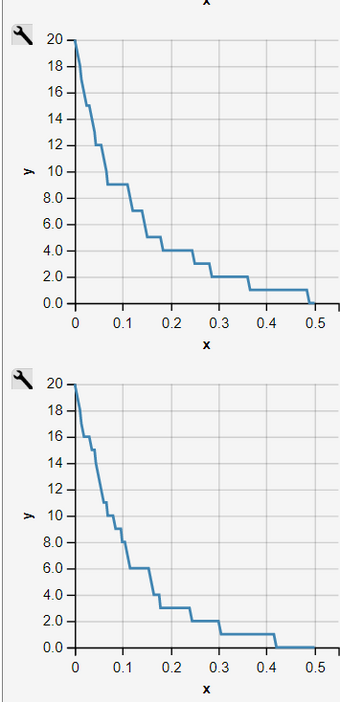
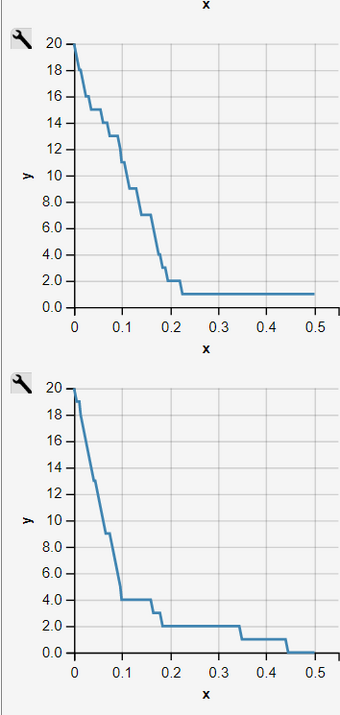
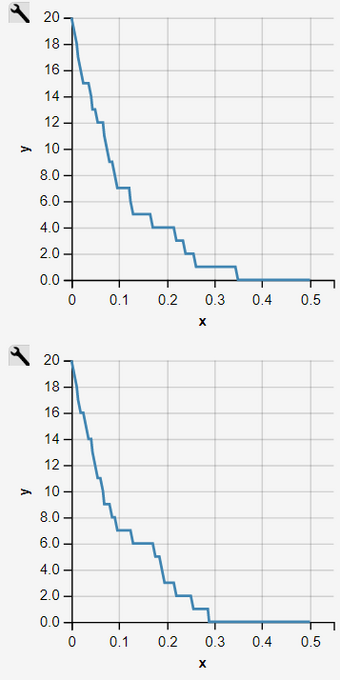
Simulation Runs as an Homogeneous Pure Decay Process
Fig. 1: Parameters of Homogenous Process
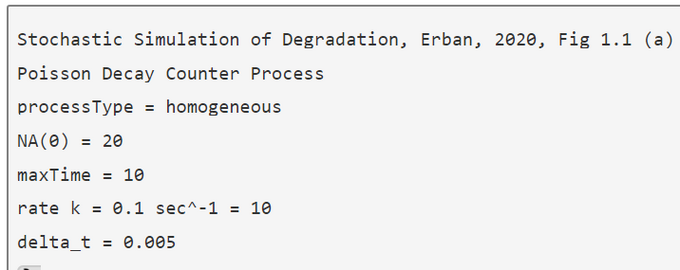
Fig. 2-11 Independent Runs
